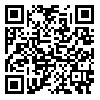BibTeX | RIS | EndNote | Medlars | ProCite | Reference Manager | RefWorks
Send citation to:
URL: http://ioh.iums.ac.ir/article-1-482-en.html
Background and aim s
The science of improvement and correction of work- environment occupation, equipment, and accordance that with abilities and limitations, is Ergonomy. use of ergonomic principles and education in this field, has important role in productivity of management in each organization. without doing of this principle would decrease effectiveness, efficiency and productivity of organization. The goal of this research is definition of ergonomic status among of personnel in work-station of laboratory of Esfahan university hospitals and definition of relative frequency incidence ergonomic disorders among this personnel .
Methods
This research is descriptive, cross-sectional, applied-basic research. The studied population of this research are the personnel of laboratory of independent hospitals to Esfahan medical science of university in Esfahan .The time of doing it, is six month second in 1383. For doing this research, enumeration way was used and 143 of them, complemented. the questionnaire completely. The equipment of this research is NORDIC Disorders Questionnaire
Results
With analysis of information of completed questionnaires, personnel have had maximum disorders in neck and knee with (%57/3)and minimum disorders in thigh and elbow with(%19/6) and was defined the relative frequency of disorders ergonomic among studied-personnel for the hours, shift, years of work and got the results. The personnel that is work From 41 to 70 hours in a week, and the their of work shift is afternoon and night have the most disorders.
Conclusion
The execution of ergonomic principles by use of standard equipment such as , standard work tables in laboratory , flexible and comfortable Chairs, and sufficient light for laboratory environment, could reduce ergonomic disorders especially for neck and knee that reduce of these disorders has an important role in increase of productivity of human resources and existence of motive for achieve of organization goals.
| Rights and permissions | |
 |
This work is licensed under a Creative Commons Attribution-NonCommercial 4.0 International License. |





